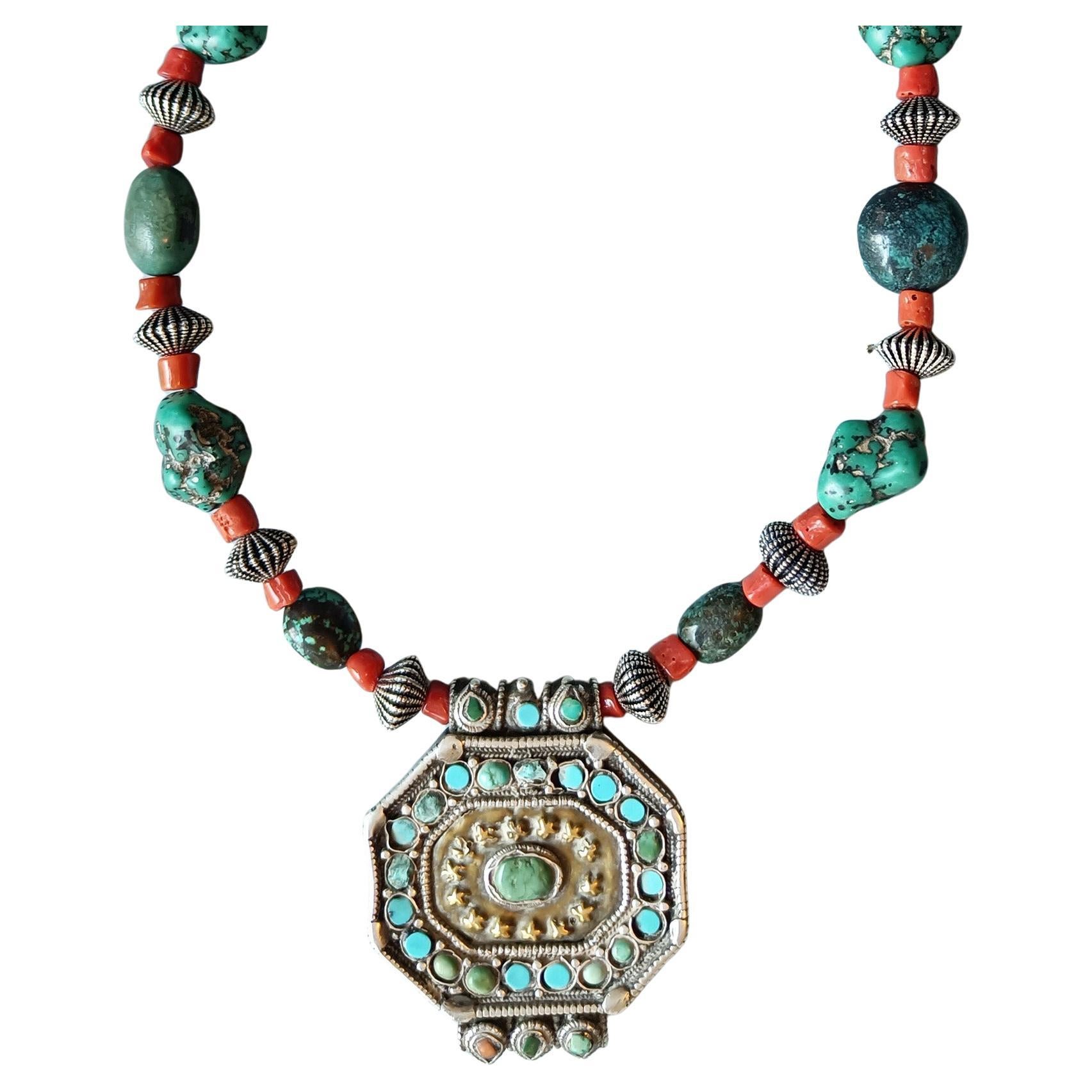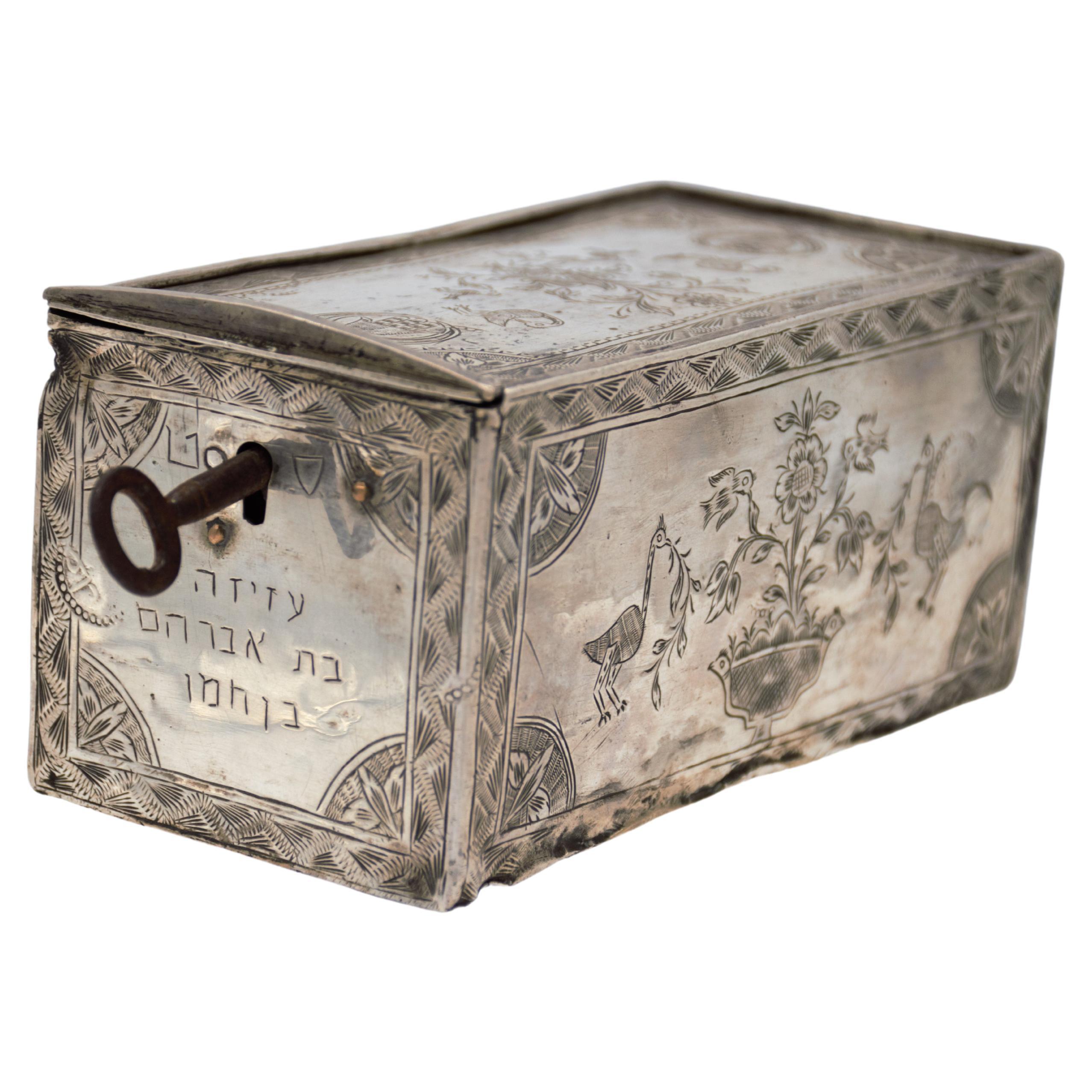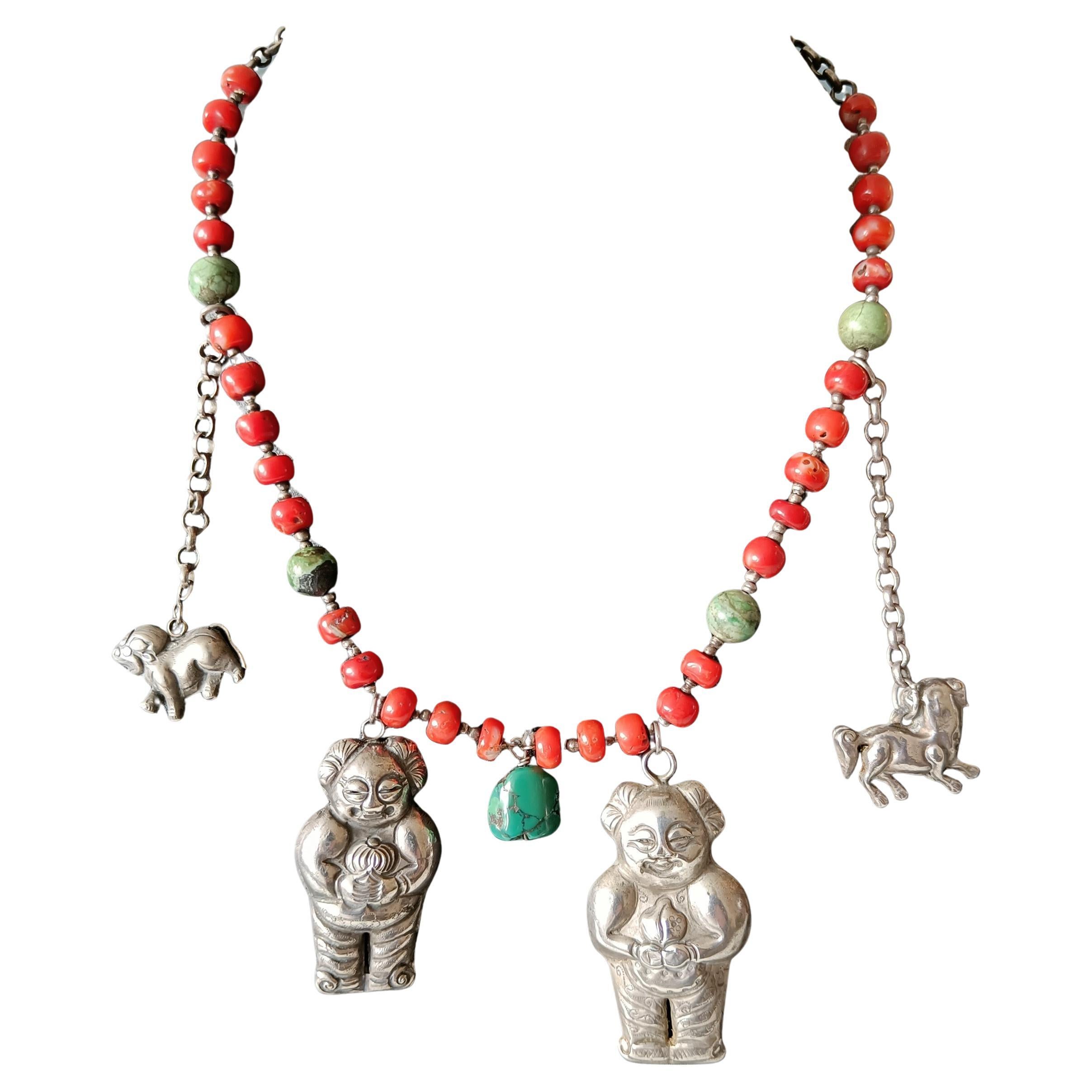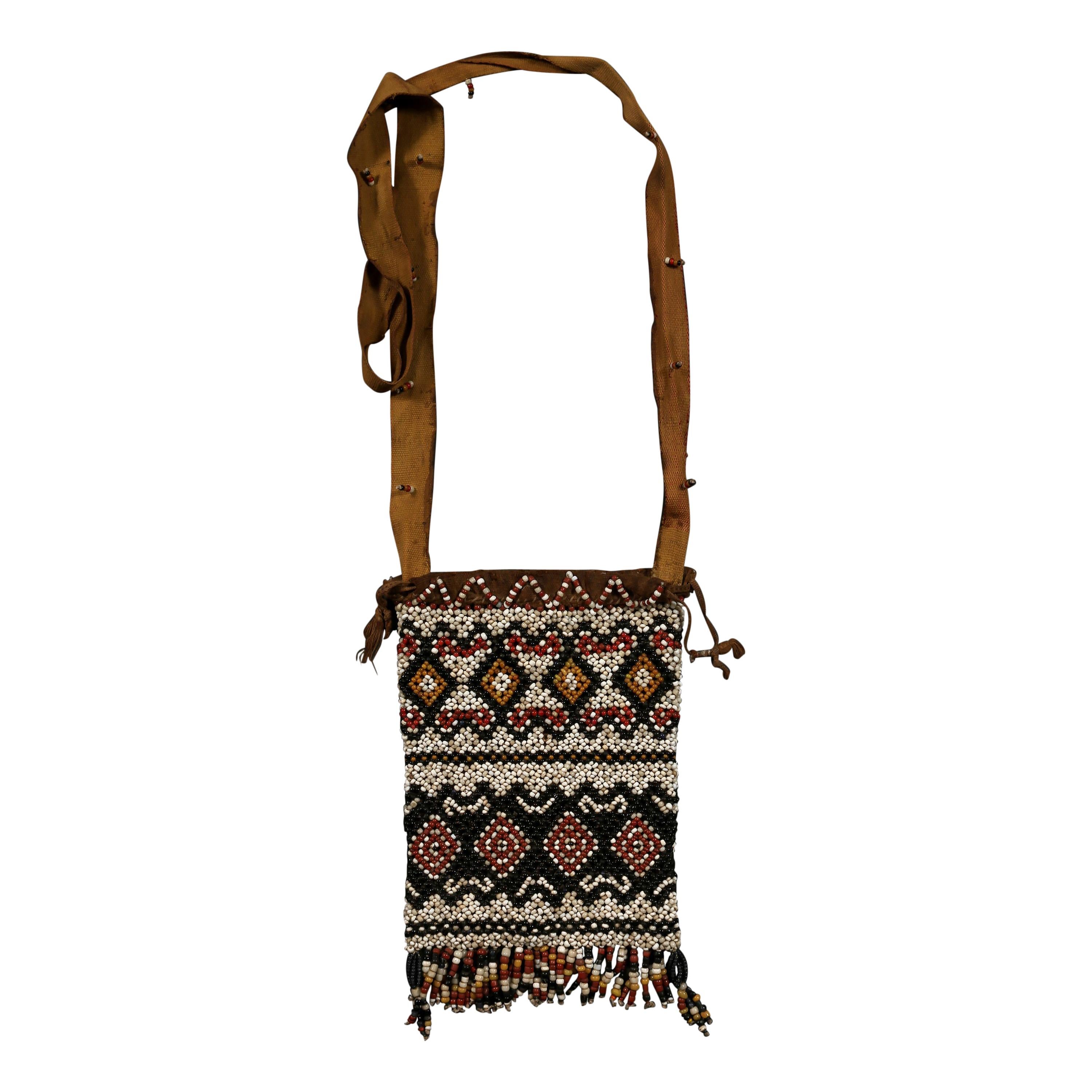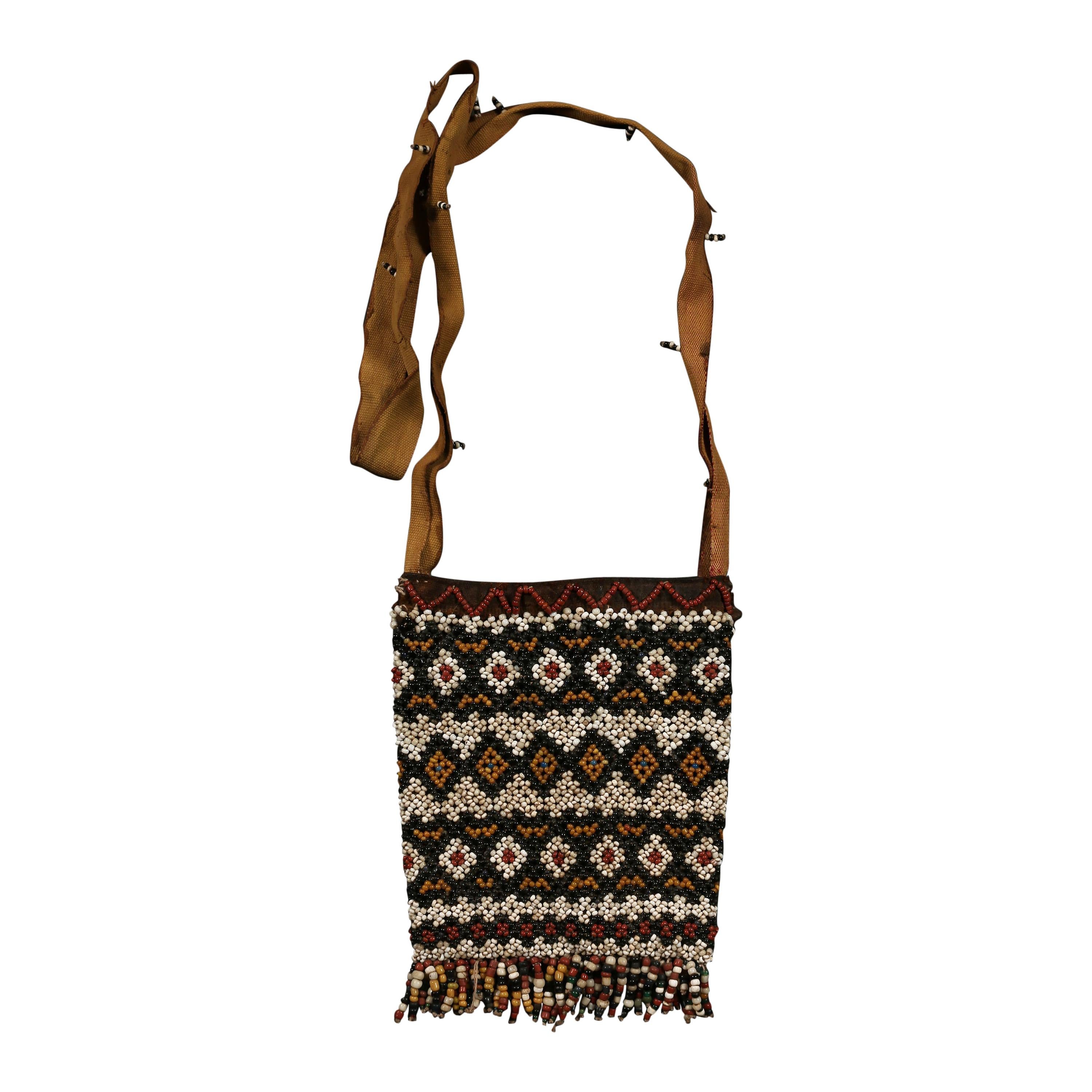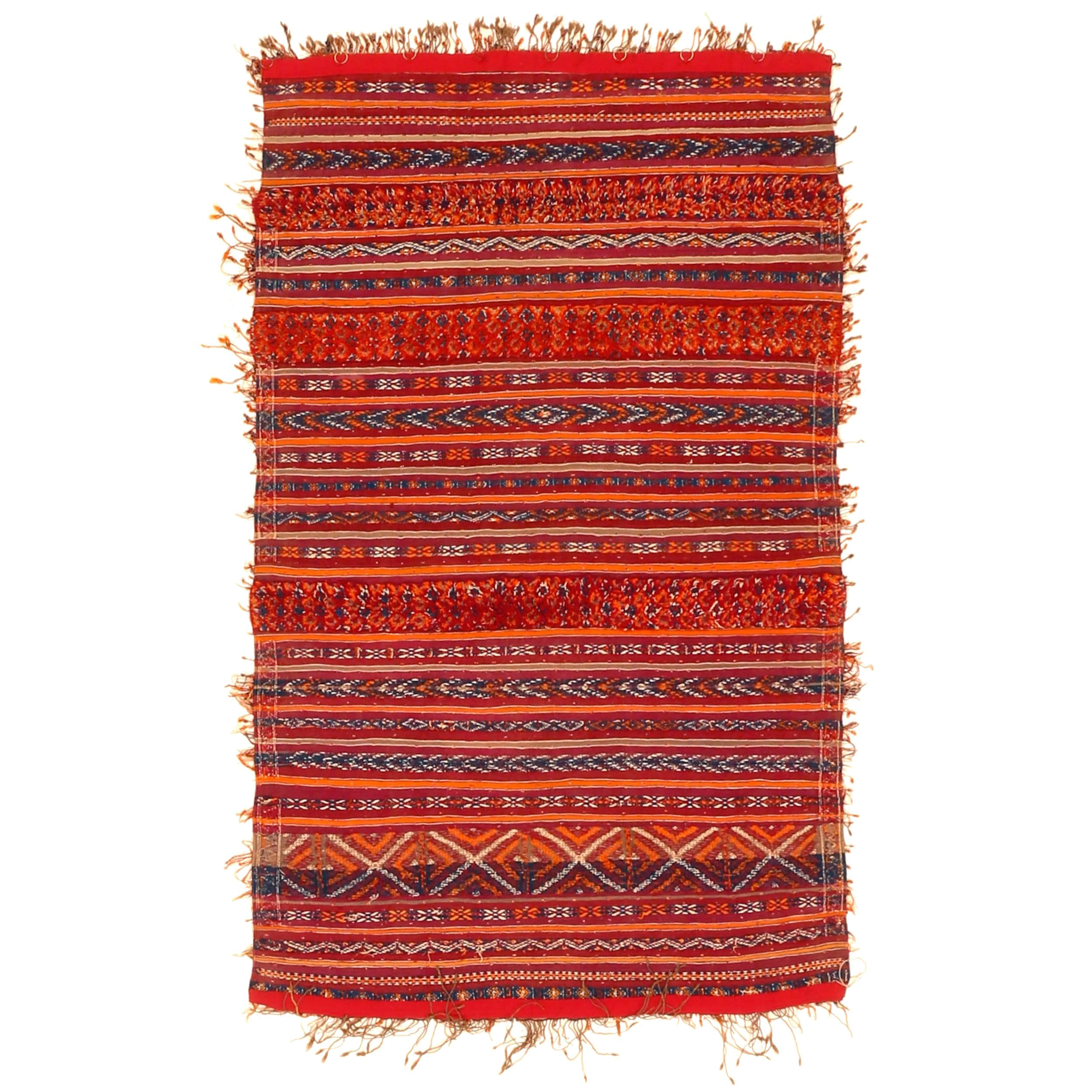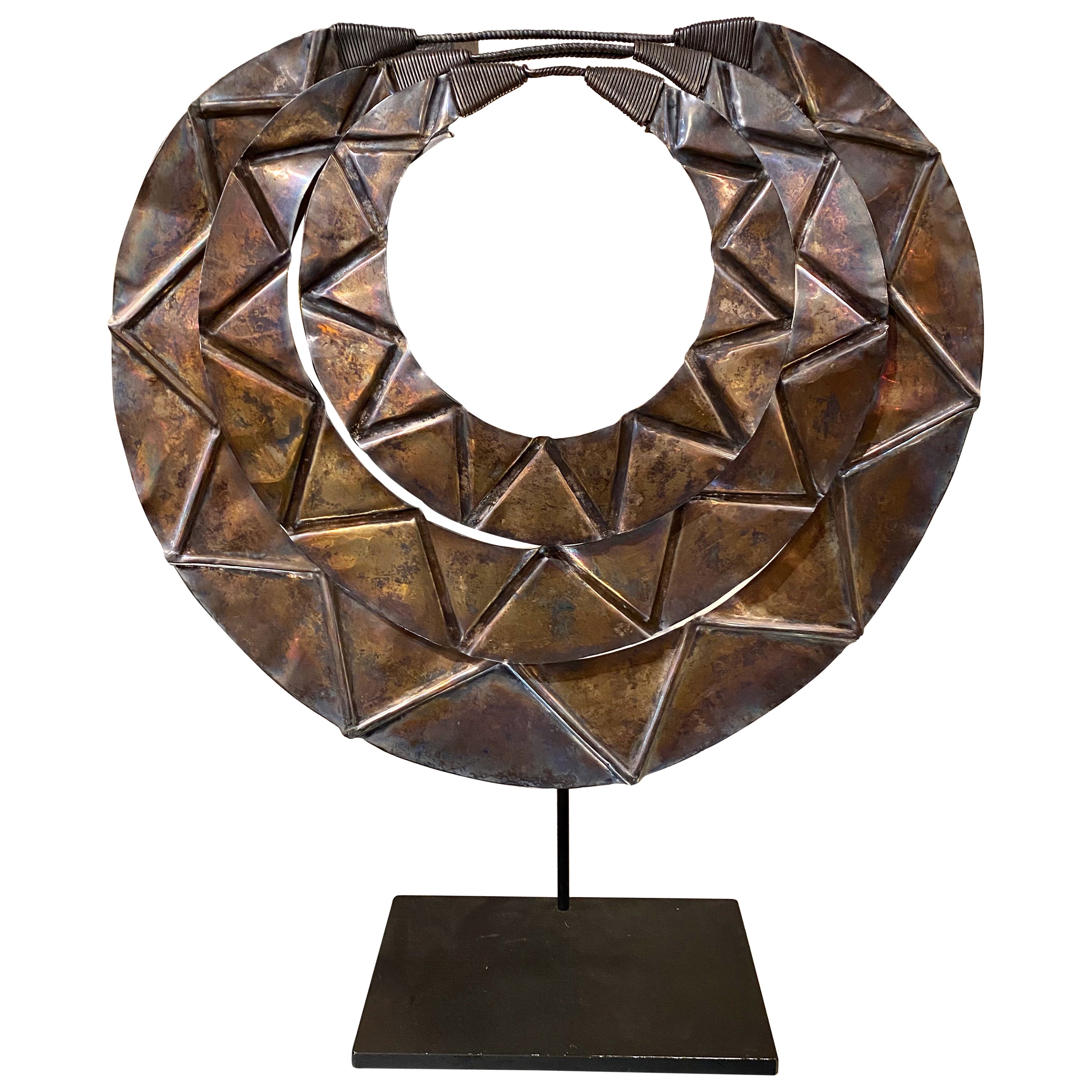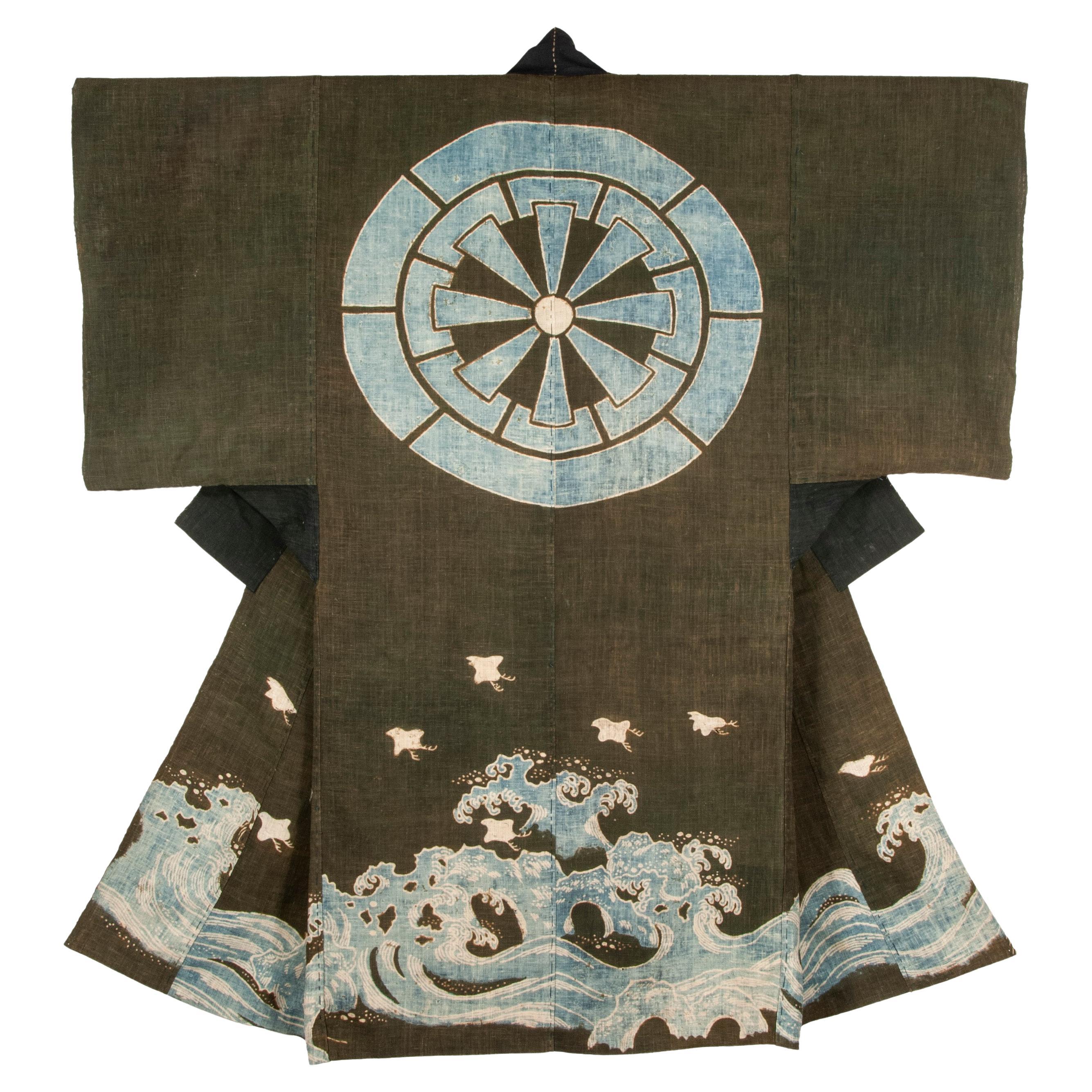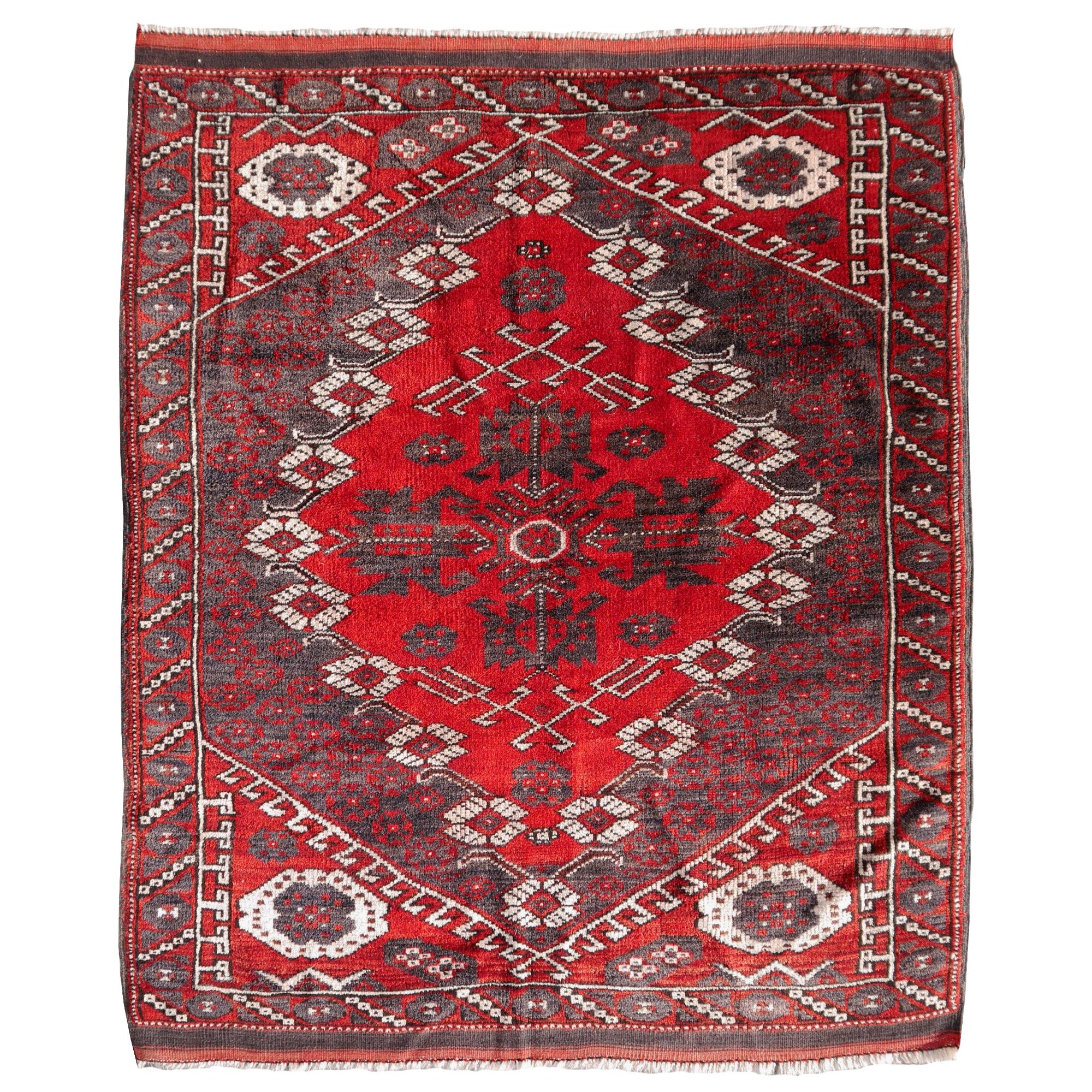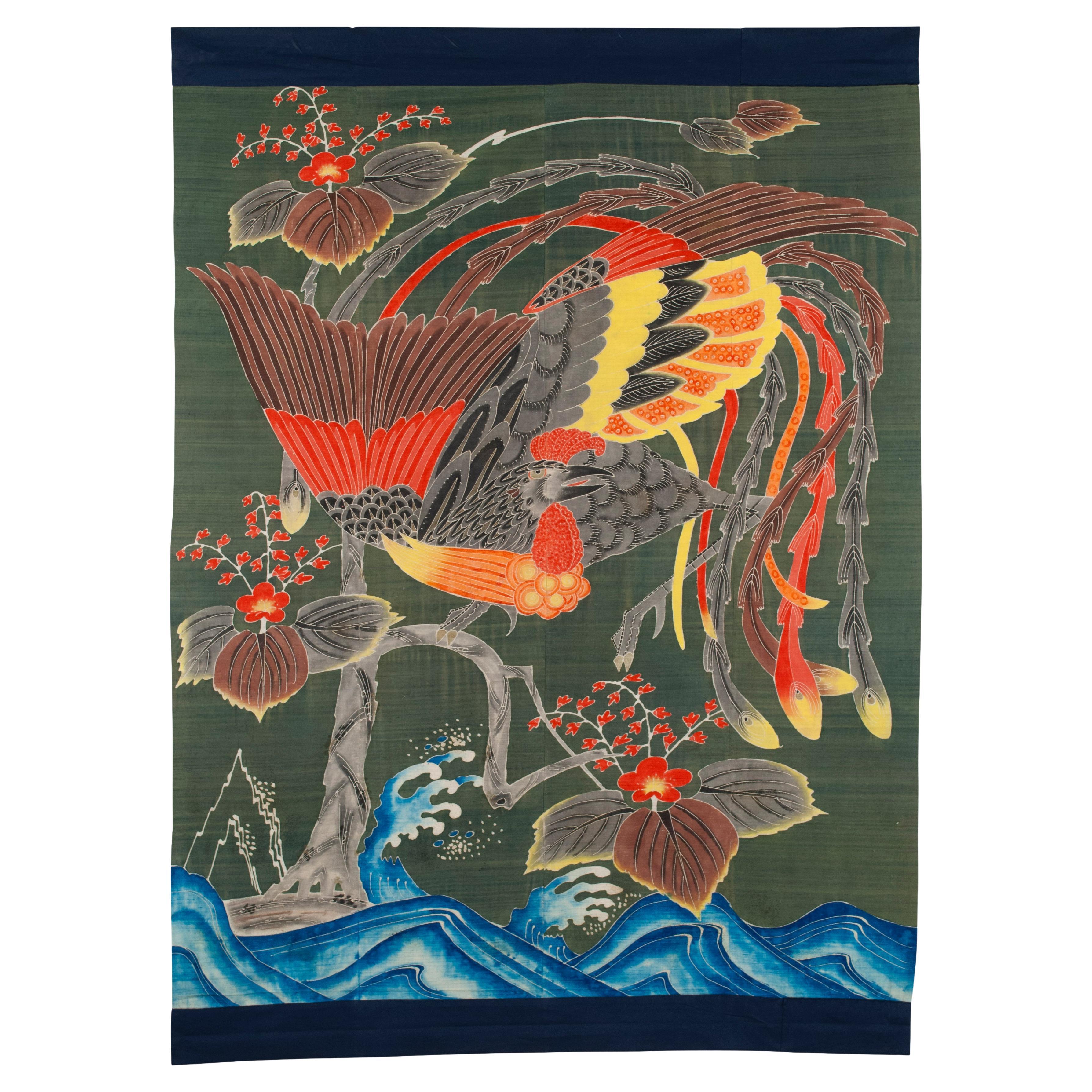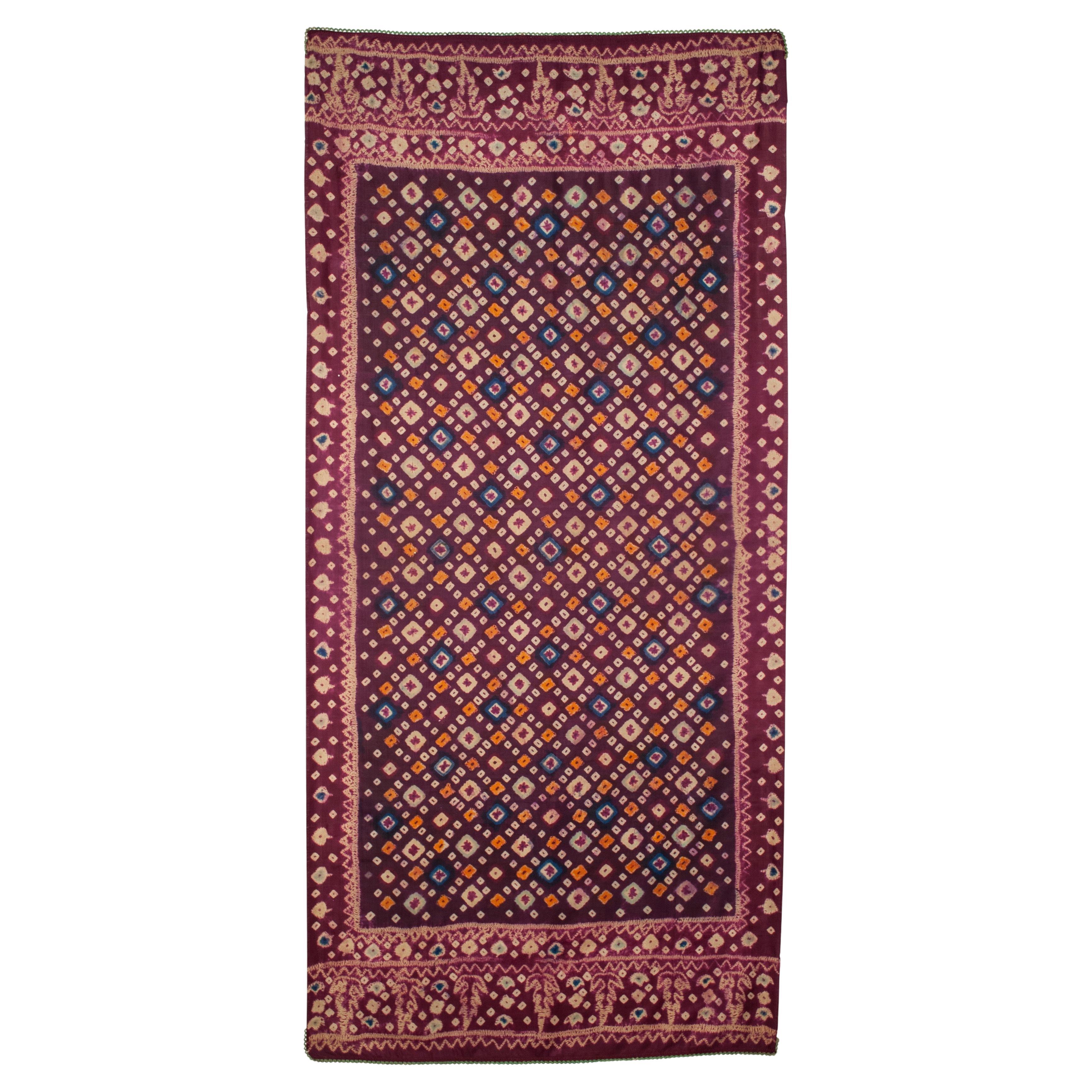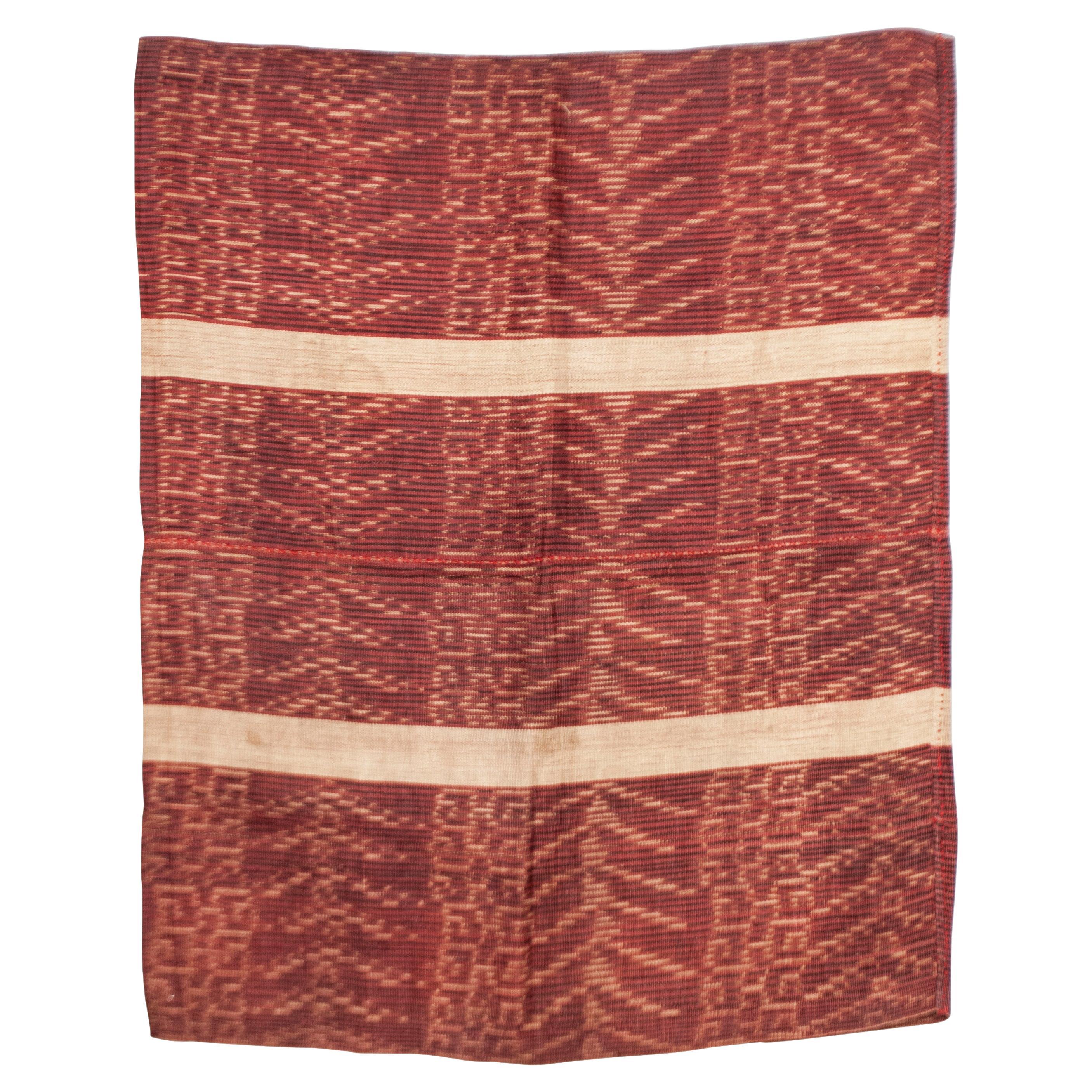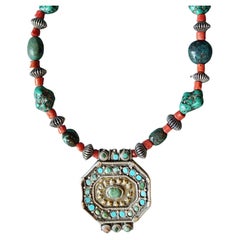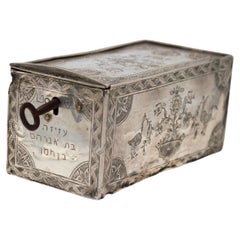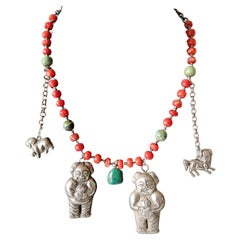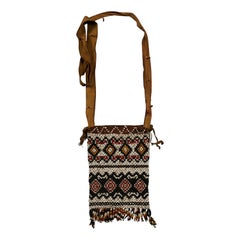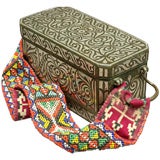
Rare Antique Silver Inlaid Betel Nut Box
View Similar Items
1 of 6
Rare Antique Silver Inlaid Betel Nut Box
About the Item
Betel nut, for those unfamiliar, is a mild stimulant that is chewed throughout the Asian continent. The almost ceremonial and habitual chewing of the betel nut usually involves four ingredients: areca nut (bunga), fresh pepper leaves (buyo), powder lime (apug), and damp tobacco leaves. The white residue on edge is slaked lime (Calcium Hydroxide) which releases the alkaloid in the Betel Nut.
This is a fine old box made in the early 20th century. Both the Fowler Museum at UCLA (catalog item number X79-15a,b) and the Smithsonian Institute (museum catalog number 383314) have very similar examples of this same type of betel box in their collection.
Dimensions are 6.75 inches x 3.25 inches x 3.25 inches.
- Dimensions:Height: 3.25 in (8.26 cm)Width: 6.75 in (17.15 cm)Depth: 3.25 in (8.26 cm)
- Materials and Techniques:
- Place of Origin:
- Period:
- Date of Manufacture:Early 20th Century
- Condition:excellent with only minor silver loss.
- Seller Location:San Francisco, CA
- Reference Number:1stDibs: U0904078476297
Authenticity Guarantee
In the unlikely event there’s an issue with an item’s authenticity, contact us within 1 year for a full refund. DetailsMoney-Back Guarantee
If your item is not as described, is damaged in transit, or does not arrive, contact us within 7 days for a full refund. Details24-Hour Cancellation
You have a 24-hour grace period in which to reconsider your purchase, with no questions asked.Vetted Professional Sellers
Our world-class sellers must adhere to strict standards for service and quality, maintaining the integrity of our listings.Price-Match Guarantee
If you find that a seller listed the same item for a lower price elsewhere, we’ll match it.Trusted Global Delivery
Our best-in-class carrier network provides specialized shipping options worldwide, including custom delivery.You May Also Like
Antique Tibetan Gau Box Silver Turquoise pendant necklace
Located in London, GB
Ga`u Box necklace with silver with Turquoise inlay with coral and turquoise beads
All Tibet/ Himalaya mid 20th century
Category
Antique Mid-19th Century Tibetan Tribal Art
Materials
Brass
extremely rare Algerian Judaica silver, jewish Dowry box early 19th century
Located in Tel Aviv - Jaffa, IL
Amazing and scarce JUDAICA object, we have here one of the most touching jewish objects we had for a long time, this small silver dowry box was made in Algeria in the early 19th century, it is all covered with symbols of jewish faith and of couples, the sliding lid has 2 flanking birds with hamsa (protective hand) on each side and a flower vase in the middle.
one side shows two flanking lions with a tree in the middle and the other side shows again two big and two small birds with a flower bowl in the middle, front side has a key hole and next to it there is the Hebrew inscription ס״ט״" which says Siman tov or in English "a good sign" it is taken from the wedding blessing, underneath the lock there is another inscription with the name ״עזיזה בת אברהם בן חמו״ which is the name of the bride, her father and her grandfathers name.
the box is full marked a lot of times with the silversmith mark, every side of the box is marked.
this box was probably ordered by the grooms family to hold the jewelry they are giving to the bride as dowry, this type of objects are rare and there are just a few of them on museum collections.
DOWRY (Heb. נְדֻנְיָה), the property a wife brings to her husband at marriage; the Yiddish equivalent, nadn, is from the same root. The custom of nedunyah became clearly defined and institutionalized only in the talmudic period. In biblical times, mohar (מֹהַר), whereby the groom bought his wife from her father (Gen. 24:53; Ex. 22:15–16; Hos. 3:2), was the accepted practice. It was then customary that the groom give the bride gifts, and that she bring certain property to her husband's home upon marriage: slaves, cattle, real estate, etc. (cf. Gen. 24:59–61; 29; Judg. 1:14ff.; I Kings 9:16). Evidence of the custom of nedunyah is to be found in Tobit (7:14; 8:21) and in the Assuan papyri (Cowley, Aramaic, nos. 15, 18). Gradually, mohar was superseded by the ketubbah custom according to which the husband merely assumed the responsibility of compensation to his wife in case he divorced her: he had to pay her 200 zuzim if she had been a virgin at the time of marriage, and 100 zuzim if a widow or divorcée (see *Ketubbah).
By talmudic times, the institution of nedunyah was prevalent; the father gave a dowry to the bride since the daughter was excluded from paternal inheritance. Fifty zuzim (equivalent to the worth of 180 grams of silver) was the minimum amount a father was obliged to give to his daughter (Ket. 6:5). Parents usually gave much more, according to their social standing. Community funds provided the dowry for an orphan or a very poor girl (ibid.; cf. Sh. Ar., YD 251:8). In case of her father's death, the brothers of a minor girl were obliged to give her the minimum dowry, and the court estimated how much her father would have given her above the minimum dowry. The sum was then taken out of the father's estate and given to the daughter upon majority (Ket. 6:6; 68a–69b). In the absence of such an estimate, each daughter was entitled to receive one-tenth of the value of her father's estate in money, or in valuables (Yad, Ishut, 20:4–7; Sh. Ar., EH 113:4). If the father was unable or unwilling to pay the promised dowry at the betrothal ceremony, the groom could refuse to marry his bride (Ket. 13:5; Ket. 108b–109a). Insistence on exact payment of the promised dowry, however, was frowned upon by later rabbinic authorities (Rema to Sh. Ar., EH 2:1). In certain communities it was customary for the groom's father to make a dowry contribution equal to that of the bride's father (Ket. 102b). The dowry, whether given in real estate, slaves, money, or chattel was recorded in the marriage contract (the ketubbah) and in some instances one-third or one-fifth of the actual value of the dowry was added to the sum mentioned in the ketubbah. Based upon a decree enacted by *Simeon b. Shetah (first century C.E.), the Talmud ruled that the husband and his entire property were liable for compensation as stipulated in the ketubbah, either in case he died (when she collected the sum specified in the ketubbah from the heirs) or in case he divorced his wife (Ket. 82b). For the status of the dowry and the husband's rights and obligations, see below. The rabbinic enactments (Takkanot Shum) by R. Jacob *Tam and by the rabbinic synod of the communities of Speyer, Worms, and Mainz (Germany) stipulated that if a woman died...
Category
Antique Mid-19th Century Algerian Tribal Art
Materials
Silver
Rare Antique Qing Dynasty Chinese Ethnic Minority silver Coral necklace
Located in London, GB
A beautiful rare Antique Qing Dynasty Chinese Ethnic Minority silver Coral turquoise necklace from Yunnan.
A superb chain necklace with added Taoist charms with turquoise and fine r...
Category
Antique Mid-19th Century Chinese Tribal Art
Materials
Coral, Silver
Beaded Betel Bag, Sumatra, Early to Mid-20th Century
Located in Point Richmond, CA
Sumatran beaded betel bag made of glass trade beads from early to mid-20th century.
Category
Early 20th Century Indonesian Tribal Art
Materials
Beads
$300 Sale Price
36% Off
Beaded Betel Bag, Sumatra, Early to Mid-20th Century
Located in Point Richmond, CA
Sumatran beaded betel bag made of glass trade beads from early to mid-20th century.
Category
Early 20th Century Indonesian Tribal Art
Materials
Beads
$300 Sale Price
36% Off
Rare Antique Zemmour Moroccan Berber Rug
Located in Milan, IT
A rare mixed technique Berber rug ascribed to the Zemmour people, located in the Moroccan Middle Atlas, originally used as a saddle cover - an item of great prestige among Berber tri...
Category
Vintage 1920s Moroccan Tribal Moroccan and North African Rugs
Materials
Wool
